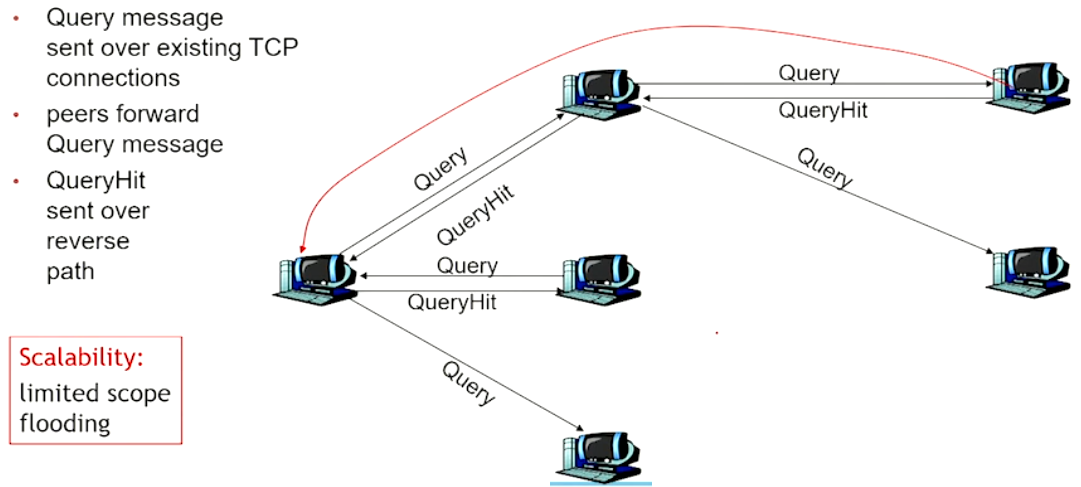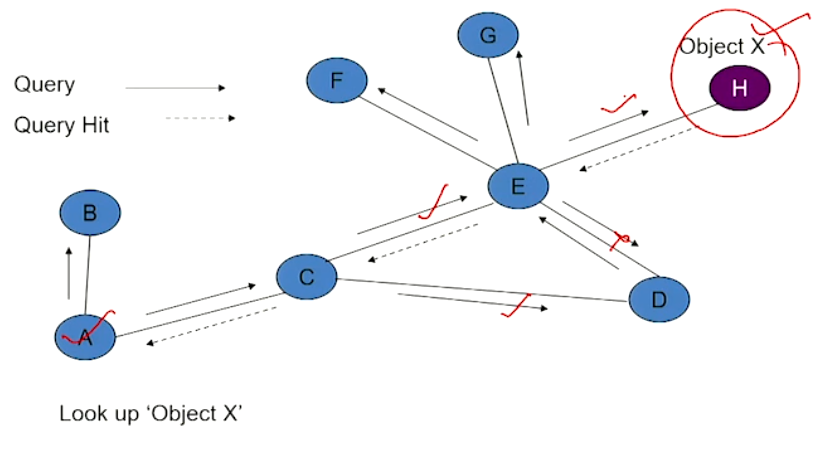Module 8#
P2P Architecture#
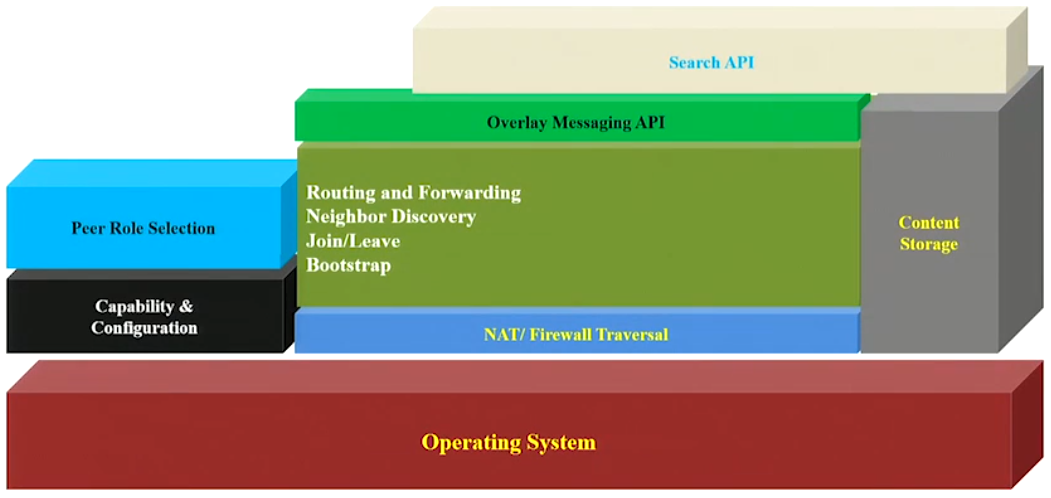
Centralized P2P Architecture#
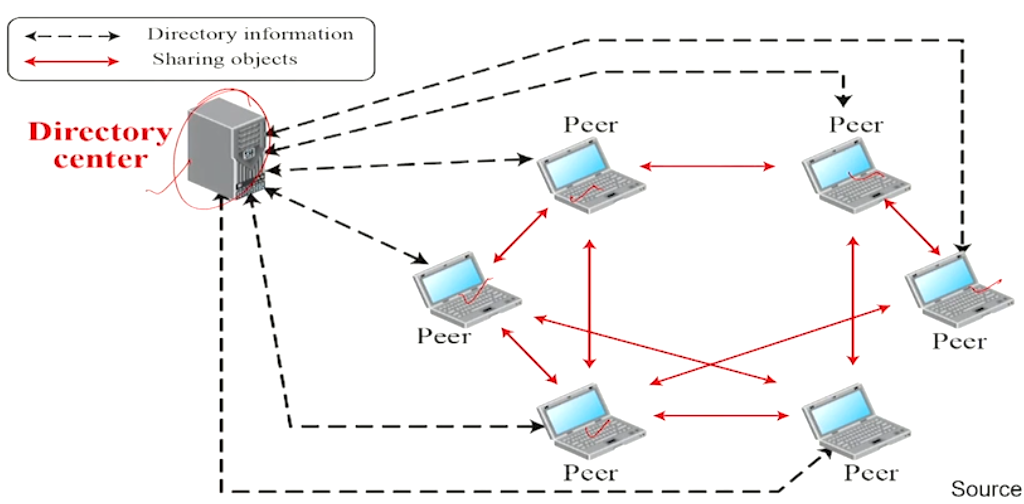
Decentralized P2P Architecture#

Examples of several P2P applications#
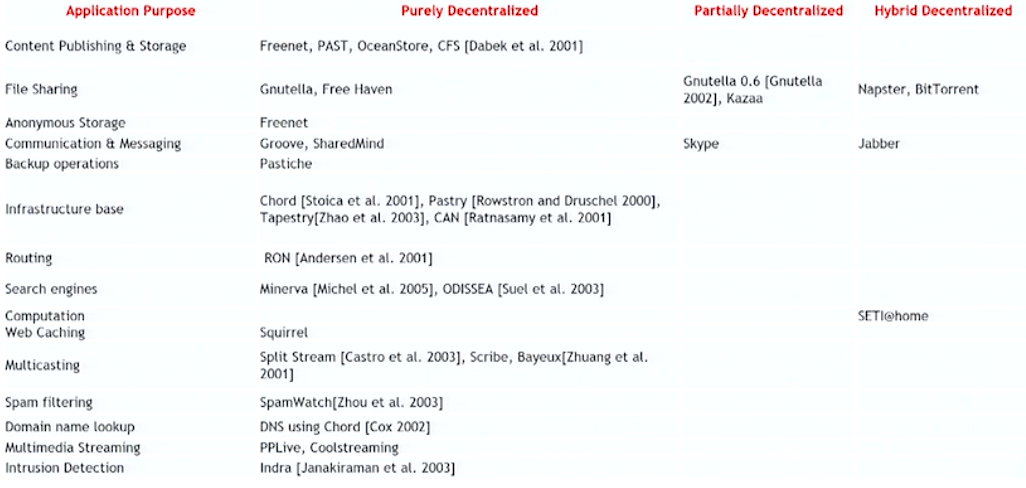

Data Indexing and Overlays#
The data in a P2P networks is identified by using indexing. Data indexing allows the physical data independence from the applications.
Centralized indexing#
Uses on or few central servers to store references to the data on many peers. The DNS lookup as well as the lookup of early p2p networks such as Napster used a central directory lookup.
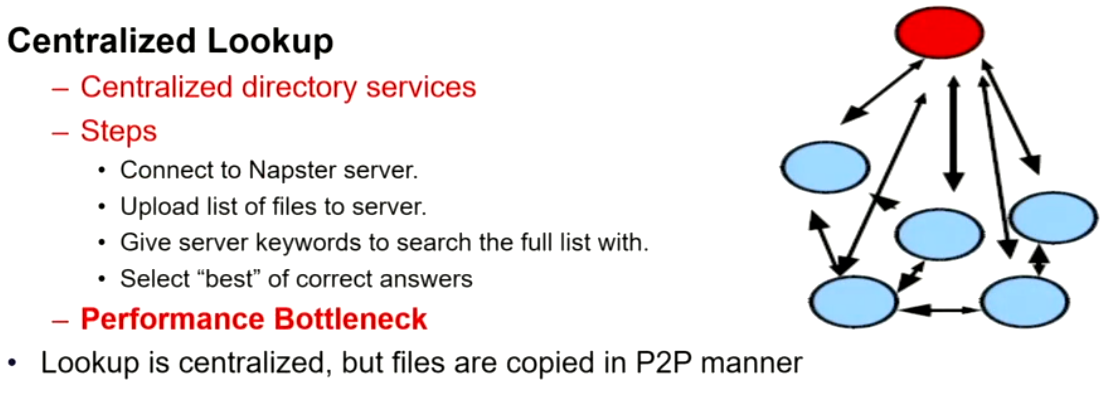
Local Indexing#
This requires peer to index only the local data objects and remote objects need to be searched for. This form of indexing is typically used unstructured overlays in conjunction with flooding search or random walk search.
Distributed Indexing#
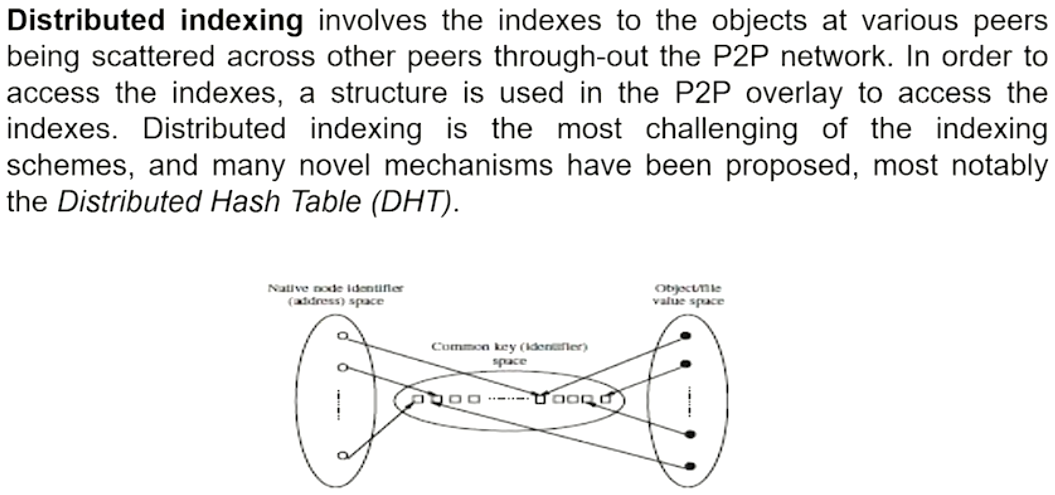
Classification of P2P overlay networks#
- Structured overlay network
- Unstructured overlay networks
Unstructured P2P networks#

BitTorrent#

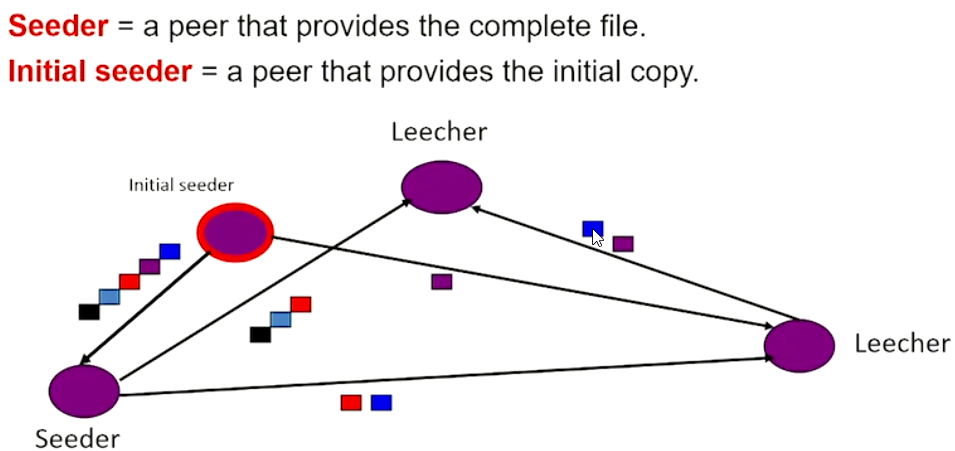
Gnutella query flooding#

